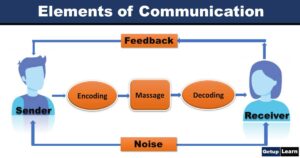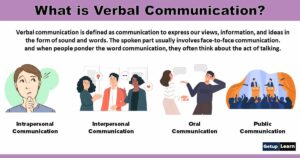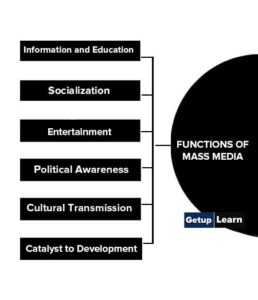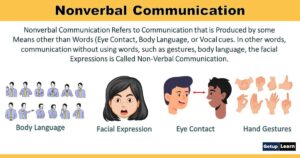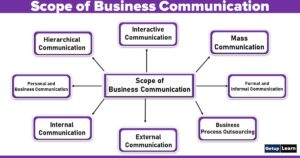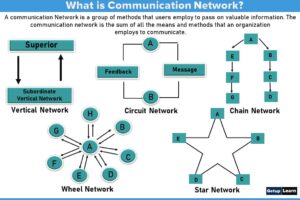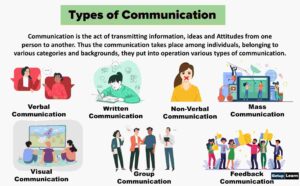Table of Contents
- 1 What is Development Communication?
- 2 Definitions of Development Communication
- 3 Process of Development Communication
-
4 Functions of Development Communication
- 4.1 Assessing the Needs
- 4.2 Access to Technology
- 4.3 Access to Communication
- 4.4 Providing Support for the Preservation of Culture
- 4.5 Raising Awareness
- 4.6 Fostering Positive Attitudes
- 4.7 Providing Relevant Information
- 4.8 Supporting Economic Development Through Industrial Linkage
- 4.9 Providing Support for Specific Development Projects and Social Services
- 5 Elements of Development Communication
- 6 5 Approaches to Development Communication
- 7 Importance of Development Communication
- 8 FAQ Related to Development Communication
What is Development Communication?
Development communication is a discipline in development planning and implementation in which a more adequate account is taken of human behavioural factors in the design of development projects and their objectives. Development Communication consists of two broad concepts- Development and Communication.

Table of Contents
The word development can be seen as the overall progress of the society that which is possible only with appropriate communication measures, engaging every stakeholder, policymaker to bring about a social change that would create a positive impact in the lives of the people.
Definitions of Development Communication
There are various definitions of Development Communications.
According to Erskine Childers -Development support communication is a discipline in development planning and implementation in which more adequate account is taken of human behavioural factors in the design of development projects and their objectives.
According to World Bank- Development Communication is the “integration of strategic communication in development projects based on a clear understanding of indigenous realities.
According to Manyozo (2012) development communication refers to a group of method driven and theory-based employment of media and communication to influence and transform the political economy of development in ways that allow individuals, communities and societies to determine the direction and benefit of development interventions.
According to Ascroft and Masilela, Development Communication is essentially participatory as “participation translated into individuals being active in development programmes and processes; they contribute ideas, take initiatives and articulate their needs and their problems, while asserting their autonomy”.
Development communication according to Mefalopulos Paulo (2008), engages stakeholders, establishes conducive environments, assesses risks and opportunities, and promotes information exchanges to bring about positive social change via sustainable development.
Process of Development Communication
The process of development communication includes:
- Proximity to the Receiver
- Establish Credibility
- Consultation
- Involve Receivers in Planning (Message Design or Info Product)
- The Message Is Developed and the Programme Runs
- Evaluate the Message or Programme
- Next Phase of Planning

Proximity to the Receiver
receivers in a development process are often very wary, a sceptic of the very nature of the development process but easy access to the communicator can dispel their fears and provide them with a certain amount of encouragement to participate in the process.
Establish Credibility
To get an acceptance of the message and get it readily applied it is important that the communicator develops a rapport with the receivers and gain their credibility.
Consultation
Even before embarking on the process thorough research and consultation is important to provide a direction to the process. Advocacy to help the policymakers and social mobilization to get all the players like schools, different communities, religious leaders, institutions, communities engaged in the process is very important for coordination and dialogue and the smooth and easy acceptance of the message.
Involve Receivers in Planning (Message Design or Info Product)
The receivers are the end beneficiaries of the information. Therefore they should be consulted and incorporated as an important part of the development planning which will help in message design and breaking the different barriers in the process. Analysis of the participants and their behaviours in the context of the society in which they live, the cultural norms that they follow is very important.
The Message Is Developed and the Programme Runs
The approach, the appeal and the tone of the message should be friendly and the tools and the channels of communication should be selected carefully and strategically so that the communication is utilized to its maximum potential.
Evaluate the Message or Programme
Monitoring and evaluation of the development process are important as it helps the communicator to assess the progress and modify the message and tools and processes if the need so arises.
Next Phase of Planning
It is a continuous process that requires innovative ideas and implementation of those ideas in consultation with the people for a dignified living and a better future.
Functions of Development Communication
These are the following functions of development Communication which are given below:
- Assessing the Needs
- Access to Technology
- Access to Communication
- Providing Support for the Preservation of Culture
- Raising Awareness
- Fostering Positive Attitudes
- Providing Relevant Information
- Supporting Economic Development Through Industrial Linkage
- Providing Support for Specific Development Projects and Social Services
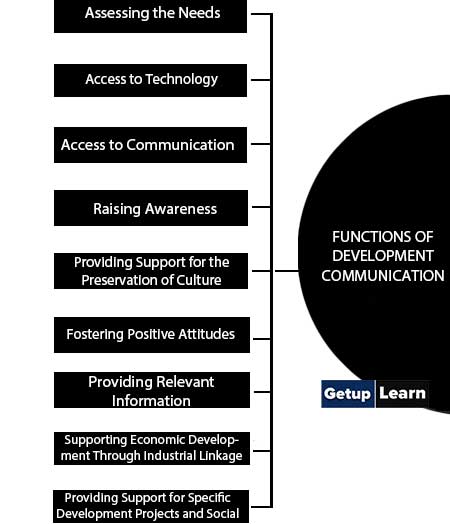
Assessing the Needs
Needs to address the basic necessities of life, the right of every individual to live with dignity. One of the primary goals of development communication is to identify the needs and give support and ample opportunity to express those needs.
Access to Technology
Technology as a tool for development has to be harnessed to its full potential and development communication provides that platform to form awareness about the technologies, and their utilization for the benefit of mankind and serve as effective feedback to the government concerning its development goals and plans.
Access to Communication
Communication is empowering every individual at every levels-horizontally, vertically and laterally, irrespective of caste, creed, sect or religion; so as to accomplish the coordination necessary for both resource re-development and human development.
Providing Support for the Preservation of Culture
Culture consists of an integral part of every societal system and to preserve it, promote it and support it through events and entertainments, awareness and participation and integrate it in the country’s development process both locally, regionally and nationally is one of the first prerogatives of development communication.
Raising Awareness
To raise people’s awareness of the country’s development projects and opportunities that it provides to society.
Fostering Positive Attitudes
Development communications should foster positive attitudes to development and provide adequate motivation.
Providing Relevant Information
Information and awareness form the grassroots of any project. Development communication endeavours to provide the right information to the right people at the right time in the right direction.
Supporting Economic Development Through Industrial Linkage
Development of any society is impossible without economic prosperity and which is possible only when there will be sufficient production of goods and services. Industry production entails employment opportunities that go on to better the socio-economic living conditions of the people.
Development issues like healthcare, agriculture, vocational skills, farming, education require devising strategies and specific solutions to address the issues plaguing the target society, constant innovations of methods and technologies, focus oriented objectives, time-bound implementation, and a strict supervision and monitoring system along with regular feedback from the target audience.
Elements of Development Communication
The key elements of development Communication approach are:
- Purposive
- Responsive
- Innovation and Creativity
- Sustainability and Continuity
- Creating a Common Platform
- Independent Validation
- Community Participation
- Accessibility to the Government
- Easy and Simple Communication Tools

Purposive
Every development communication campaign has a purpose keeping in mind the target audience and their needs. It has an objective and is very goal-oriented in its approach.
Responsive
Development communication has to be responsive, a two-way approach. The communication should flow from all sides-vertically-from the top government level to the grassroots level, from the grassroots to the policymakers; horizontally among the various departments and other stakeholders. The response should be willing participation and cooperation from all in their best interests.
Innovation and Creativity
One of the hallmarks of the development communication campaigns is innovation and creativity. The messages should be designed in such a manner so that it addresses the issue in a simple and lucid manner and the solution is acceptable by everyone within the framework of the norms of the society. Herein lies the innovation and creativity process.
Sustainability and Continuity
The communication has to be sustainable in the long process and a continuum has to set in. Any communication is successful only when it is embedded in the pattern of the society in the everyday lives, leading to a better society.
Creating a Common Platform
Sharing, exchange of ideas and information among people, the community at all levels leads to a shared value system which further leads to a developed society that could sustain itself. Development communication provides that interactive platform.
It is not about the government people who occasionally visit the community to educate and uplift them, but it is about the people in need who must equip themselves with resources that can help them sustain themselves in the long run.
Independent Validation
Development communication is a participatory approach where besides the government various non-governmental organizations, community-based organizations, extension agents, gram panchayats, individuals, special agents are also involved. Therefore the validity of the information transmitted can either be proved or disapproved.
Community Participation
Each and every community is unique in its structure, communication process, tradition and needs. Each of these, therefore, needs to be addressed individually, and strategically. The messages should be designed in a manner most suitable for that particular community in cooperation with the local people, where the communities and the developers have equal power, communication methods easily accessible to them and in the most simple and lucid language, it is presented.
Accessibility to the Government
People elect governments to serve their purpose. But there is a general apathy towards the government. Often it is seen to be distant, non-cooperative and remote. The government people are considered to be rude unfriendly and unprofessional. But with the development communication approach, one ensures full responsibility of the public.
The access and visibility of the government can be seen in the various development campaigns where the communities don’t have to travel long distances and at great costs to avail the government services and information. The government person interacts directly with the common people and is accountable to them, which builds greater reliability and credibility at all levels.
Easy and Simple Communication Tools
Last but not least an important element of the development approach is an easy and simple communication tool, which is easily accessible by everybody. The presentation should be relevant, brief, and attractive and in a language that can be easily understood.
5 Approaches to Development Communication
There are five approaches to development communication. They are as follows:
- The Interpersonal Approach
- The Mass Media Approach
- The Centralized Mass Media Approach
- Localized Mass Media Approach
- The Integrated Approach
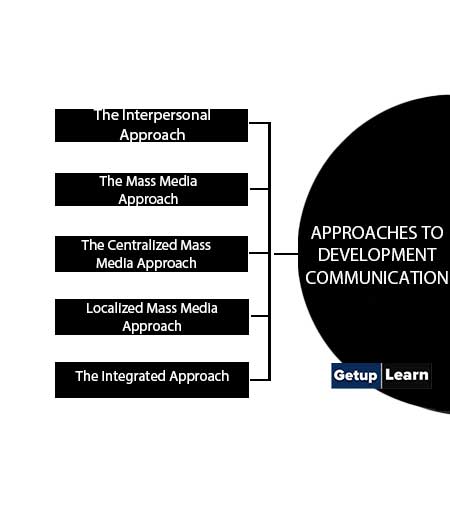
The Interpersonal Approach
This approach can be used through extension and community development methods or through ideological and mass mobilization. This method uses information on farming, agriculture, health and hygiene, small savings for homes are disseminated, where agents travel from one place to another and teach people through practical demonstrations on how to implement ideas and innovative practices.
This method is primarily directed towards the rural people who have the interest to innovate and practice new ideas, who have the necessary resources to implement those ideas and support their endeavours.
The Mass Media Approach
This approach makes extensive use of interpersonal channels, not activated by the development agents but by the party cadres. The main reason behind this is that rural development as a process is seen, as that begins with a radical change in the political orientation of the people.
The main function of development communication in this method is seen as that of promoting political consciousness among the rural people. Although the objective of the interpersonal approach and the mass media approach is the same they differ in their operational structures and direction of the contents of the message.
While the former insists on human and physical development problems the latter lays more stress on political awareness as a foundation stone for the development.
The Centralized Mass Media Approach
This method follows an inclusive and conclusive methodology whereby the mass media infrastructure and the direction and content of messages are centrally controlled. This approach relies mostly on the mass media and the message content is also of generalized nature whereby it ignores the importance of the interpersonal method.
Localized Mass Media Approach
This approach takes the cue from Dennis McQuails Democratic Participant Theory, which stresses the use of local people through an interpersonal approach, identifying issues and addressing them through local media like radio, community media etc using local dialects and designing the message as per the objectives. This also creates an atmosphere of credibility and willingness to accept the message.
The Integrated Approach
This approach considers the strengths and limitations of both the interpersonal approach and the mass media and tries to implement their potentialities. This method not only uses fully the extension and community development method and ideological and mass mobilization but also uses the centralized and the localized mass media approach.
Importance of Development Communication
Let us examine some importance of development communication:
- Provision of Information and Knowledge
- Human Empowerment
- Making the Development Programmes Understood and Accepted
- Strengthening the Decision Process
- Mobilising the People
- Building Consensus
- Facilitating Intersectoral Collaboration
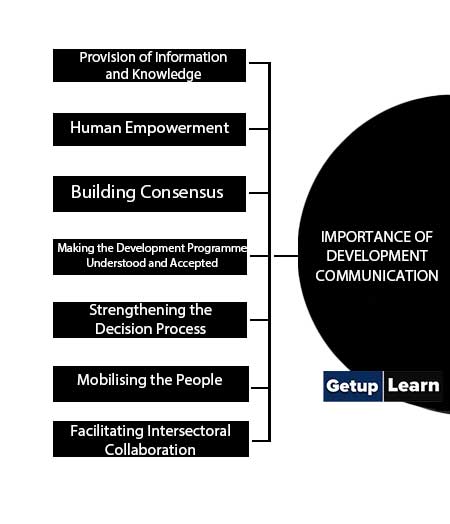
Provision of Information and Knowledge
Development communication is concerned with providing communities with information with which they can improve their lives. It helps the people to respond appropriately to available opportunities. And development communication provides information about the challenges in the environment.
Human Empowerment
Communication is used as a human empowerment tool. It is used as a tool to facilitate the participation of people in development activities. Even though knowledge and information are essential for people to successfully respond to the opportunities and challenges of social, economic and technological changes, to be useful, knowledge and information must be effectively communicated to the people.
Making the Development Programmes Understood and Accepted
Development communicators through various organised means explain the development process and programmes to the people in such a way that such programmes find acceptance among those who should benefit from them. The people are equipped to take advantage of the new ideas being offered to them.
Strengthening the Decision Process
Development communication sharpens the people’s appetite and desire for a better quality of life, and produces a change of attitude and behaviour, resulting in enhanced quality of life.
Mobilising the People
Communication enables planners when identifying and formulating development programmes, to consult with the people in order to take into account their needs, attitudes and traditional knowledge. Communication helps the beneficiaries of the development programmes become the principal actors, to make the programmes successful.
Building Consensus
Building consensus is the process that requires trust, transparency and knowledge of the dynamics of human relationships. The people can then draw up a development agenda and priorities. Without consensus building, the development would not be easy in any society.
Facilitating Intersectoral Collaboration
Noting that communication (knowledge and information) in itself does not lead to development, Anaeto & Solo-Anaeto (2010) reveal that it is a mix of communication and non-communication inputs that lead to development.
For this reason, development communication disseminates developmental messages to the people and also facilitates linkages with government agencies, non-governmental organisations and other organisations to provide an enabling environment for development to be actualised.
What is the importance of development communication?
The word development can be seen as the overall progress of the society that which is possible only with appropriate communication measures, engaging every stakeholder, policymaker to bring about a social change that would create a positive impact in the lives of the people.
What is the meaning of development communication?
Development support communication is a discipline in development planning and implementation in which more adequate account is taken of human behavioural factors in the design of development projects and their objectives. By Erskine Childers
What is development communication introduction?
Development communication is a discipline in development planning and implementation in which a more adequate account is taken of human behavioural factors in the design of development projects and their objectives. Development Communication consists of two broad concepts- Development and Communication.
What is the process of development communication?
The process of development communication includes:
1. Proximity to the Receiver
2,Establish Credibility
3. Consultation
4. Involve Receivers in Planning (Message Design or Info Product)
5. Message Is Developed and the Programme Runs
6. Evaluate the Message or Programme
7. Next Phase of Planning etc.

